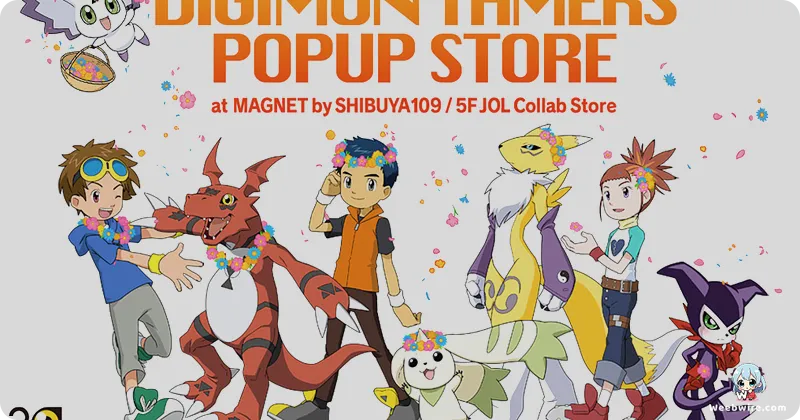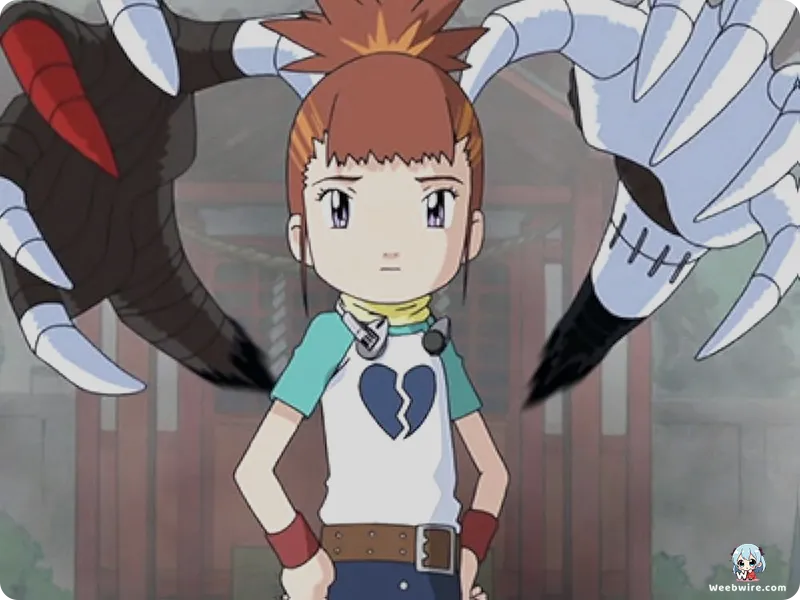Digimon Tamers: Unpacking the Revolutionary Sci-Fi Anime That Redefined a Franchise

While the vast landscape of anime is richly dotted with series celebrated for their thrilling action, heartwarming bonds, and fantastical escapades, a select few transcend their genre to leave an indelible mark through audacious narrative choices and profound thematic depths. Among these stands Digimon Tamers, the third installment in the beloved Digimon franchise, which first captivated audiences upon its premiere in April 2001. Far from a conventional monster-collecting adventure, Digimon Tamers forged its own distinct path, consistently challenging viewer expectations with its mature themes, intricate world-building, and a stark departure from the lighter, more overtly optimistic tone of its predecessors.
The Visionary Hand of Chiaki J. Konaka
A pivotal, yet often understated, force behind Digimon Tamers's singular identity was its series composition writer, Chiaki J. Konaka. Renowned for his masterful work on psychological thrillers and complex sci-fi narratives such as Serial Experiments Lain and The Big O, Konaka infused Tamers with an unparalleled philosophical and existential gravitas. His involvement marked a deliberate strategic move by the production team to push the boundaries of children's animation, imbuing the series with a more serious, at times unsettling, ambiance. This was more than a mere 'darker' turn for the franchise; it represented a fundamental conceptual shift that delved into the very essence of data, consciousness, and reality itself. The Digital World was reimagined not merely as a fantastical realm for adventure, but as an intricate, evolving computer program fraught with tangible, real-world implications, blurring the lines between the virtual and the physical in a way rarely seen in animation for its target demographic.
The series further innovated with its groundbreaking portrayal of the Digimon themselves. Unlike earlier iterations where Digimon were often presented as mystical beings from a parallel dimension, Tamers explicitly redefined them as sentient programs and data entities. This emphasis on their inherently digital nature opened avenues for fascinating explorations into artificial intelligence, code corruption, and the blurring distinctions between the virtual and physical realms. The manifestation of Digimon in the human world was depicted as 'materializations' of data, frequently leading to concrete, and at times destructive, consequences. This unique perspective elevated the narrative beyond simple monster battles, transforming each confrontation into a compelling clash of computational logic and raw emotion, often with profound philosophical undertones.
A Revolutionary Partnership: Takato and Guilmon
The protagonists of Digimon Tamers similarly defied convention, most notably Takato Matsuki and his partner, Guilmon. In a franchise traditionally featuring 'goggle-wearing' heroes who serendipitously encounter their digital companions, Takato's bond with Guilmon was revolutionary: he literally brought him into existence. Inspired by Takato's personal sketches and fueled by his fervent imagination, coupled with a mysterious Blue Card, Guilmon materialized from pure data. This meta-narrative layer deeply personalizes their partnership, establishing Guilmon as a direct extension of Takato's inner world and anxieties, rather than merely an assigned friend. This unprecedented origin story rendered their journey of development, trials, and triumphs intensely personal and emotionally resonant, a refreshing divergence from typical hero archetypes and a testament to the series' innovative spirit.

Perhaps the most audacious and unforeseen element of Digimon Tamers was its ultimate antagonist, the D-Reaper. Breaking away from traditional powerful evil Digimon or human villains, the D-Reaper was conceived as an anti-program—a relentless cleanup protocol engineered to purge anomalies within the Digital World, which had spiraled out of control and began perceiving all life, both digital and organic, as an anomaly. Its amorphous, abstract, and unyielding essence, embodying an existential threat rather than a tangible foe, propelled the series into genuine sci-fi horror territory. The D-Reaper’s terrifying, cold pursuit of total obliteration, devoid of malice yet chilling in its inevitability, solidified its place as one of the most unique and unsettling antagonists in the annals of anime, particularly for a series ostensibly aimed at younger audiences. Its very nature forced the characters, and by extension the viewers, to confront the terrifying implications of unchecked artificial intelligence and the potential for systems designed for order to become the ultimate destroyers.
The Profound Journey of Beelzemon
Character development within Digimon Tamers also distinguished itself through its profound maturity, epitomized by the remarkable redemption arc of Beelzemon. Initially a cruel and arrogant adversary responsible for one of the series' most heartbreaking moments—the tragic demise of Leomon—Beelzemon embarks on an arduous and painful odyssey of repentance and self-discovery. His transformation from a symbol of nihilistic power to a conflicted anti-hero seeking atonement is frequently lauded by fans as one of the most compelling and emotionally potent character journeys across the entire Digimon franchise. It powerfully demonstrated the series' readiness to explore complex themes of grief, responsibility, and the profound possibility of change with remarkable nuance, proving that even the darkest characters can find a path towards redemption.
Even the series' conclusion boldly veered from conventional expectations. Unlike the often definitive, 'happily-ever-after' endings characteristic of its predecessors, Digimon Tamers concluded on a poignant, bittersweet note. The Digimon are compelled to return to the Digital World, leaving their human partners with a sense of profound loss, yet also an enduring ember of hope for a future reunion. This open-ended, more realistic resolution resonated deeply with its maturing audience, reinforcing the series' thematic richness and its courage to embrace the complexities of life and the bittersweet nature of farewells. It left an indelible impression, cementing Digimon Tamers not merely as a children's program, but as a groundbreaking, thought-provoking piece of science fiction that continues to be celebrated by fans for its daring vision and enduring legacy, a true standout in the history of anime.
Credits
Digimon Tamers
Author
Akiyoshi Hongo
Cover Art
Katsuyoshi Nakatsuru
Studio
Toei Animation
Publisher
Bandai
Producers





